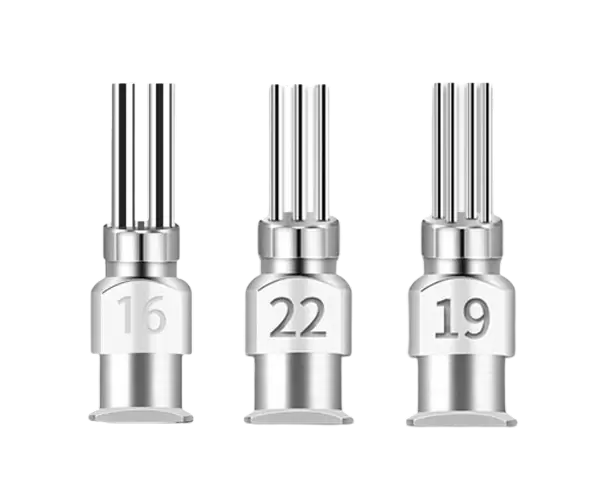In high-speed manufacturing and laboratory environments, adhesive dispensing is a process that demands both speed and precision. While single-tube dispensing needles have been the standard for decades, the demands of modern industries are evolving. Enter the multi-tube metal needle—an innovation designed to improve throughput, consistency, and efficiency.
But what makes multi-tube designs superior to traditional single-tube dispensing? And why should industries consider upgrading their dispensing systems? This article explores the advantages of multi-tube metal needles, when to use them, and how they transform adhesive application across industries.
For more detailed product insights, explore Contriu’s multi-tube metal needle solutions here.
The Role of Dispensing Needles in Modern Manufacturing
Dispensing needles may seem like small tools, but they are the final touchpoint in adhesive application. Their size, shape, and configuration determine:
-
The volume of adhesive applied.
-
The accuracy of placement.
-
The speed of the production cycle.
A single-tube needle is adequate for low-volume, precision dispensing tasks. However, as industries shift toward high-speed automation and mass production, the limitations of single-tube dispensing become more apparent.
What Are Multi-Tube Metal Needles?
Multi-tube metal needles are dispensing tips engineered with two or more stainless steel tubes within a single hub. Instead of dispensing adhesive at just one point, these needles enable simultaneous multi-point dispensing.
Key characteristics include:
-
Multiple outlets (dual, triple, or custom).
-
Precision-engineered diameters for consistent flow.
-
Durable stainless steel construction that resists wear and corrosion.
-
Compatibility with manual, pneumatic, and robotic systems.
The result? Faster adhesive application without compromising accuracy.
Advantages of Multi-Tube Metal Needles Over Single-Tube
1. Higher Throughput
The most obvious advantage is speed. With multiple outlets, manufacturers can apply adhesive at several points in a single cycle, dramatically reducing production time.
Example: In electronics assembly, a single-tube needle may require 5–6 placements per unit. A dual- or triple-tube needle can cut that down to just 2 passes, saving valuable seconds per unit.
2. Improved Consistency
In manual operations, human error often leads to uneven adhesive lines. Multi-tube needles reduce variability by ensuring uniform adhesive distribution across multiple outlets at once.
This consistency improves product quality and reduces rework, especially in industries where tolerances are tight.
3. Better for Automation
Robotic dispensing systems thrive on repeatability. With multi-tube needles, robots can achieve symmetrical and balanced adhesive application, simplifying programming and reducing cycle times.
Automated lines also benefit from fewer tool changes, as multi-tube needles can handle what would otherwise require multiple single-tube passes.
4. Versatile Configurations
Unlike single-tube needles, which offer only one point of output, multi-tube needles can be customized to fit application needs:
-
Tube spacing can be adjusted for specific component layouts.
-
Gauge size can be matched to adhesive viscosity.
-
Lengths can be tailored to reach confined spaces.
This flexibility allows manufacturers to design their dispensing tools around process requirements rather than limitations.
5. Reduced Operator Fatigue
For manual dispensing, multi-tube needles reduce repetitive motion. Instead of repositioning a needle five times, an operator may only need two placements. This not only speeds up production but also improves workplace ergonomics.
6. Lower Long-Term Costs
Although multi-tube needles may cost more upfront than single-tube alternatives, the savings quickly add up:
-
Reduced adhesive waste.
-
Fewer rejected parts.
-
Faster cycle times leading to higher output.
In mass production, these efficiencies can significantly outweigh the initial investment.
When Should You Use Multi-Tube Needles?
While single-tube needles still have their place in niche or low-volume applications, multi-tube designs are ideal for:
-
Electronics Manufacturing – Applying adhesives to multiple contact points on a PCB in fewer passes.
-
Automotive Production – Simultaneous sealing of multiple joints in vehicle interiors or engines.
-
Medical Devices – Bonding multiple small components in one application for faster assembly.
-
Packaging – Applying multiple glue lines on cartons or seals efficiently.
Challenges and Solutions
Like any tool, multi-tube needles come with challenges—but most can be easily managed.
-
Clogging: More outlets mean more opportunities for blockages.
-
Solution: Use appropriate gauge sizes and implement strict cleaning protocols.
-
-
Calibration: Ensuring equal flow across all outlets requires precision.
-
Solution: High-quality suppliers like Contriu engineer needles with uniform inner diameters to maintain balance.
-
-
Cost: Multi-tube needles are more expensive than single-tube designs.
-
Solution: Focus on ROI—consider the time and material savings across large production runs.
-
Best Practices for Multi-Tube Dispensing
To maximize performance, follow these best practices:
-
Match Needle Gauge to Adhesive Viscosity – Prevent clogging by selecting the right diameter.
-
Pre-Test Flow Rates – Run small-scale trials before full production.
-
Clean Immediately After Use – Prevent hardened adhesive from clogging outlets.
-
Store Properly – Keep capped and in a clean, dry environment.
-
Train Operators – Ensure staff understand proper handling and system integration.
Contriu’s Multi-Tube Needle Solutions
Contriu specializes in precision-engineered dispensing needles, offering both standard and custom configurations. Their multi-tube metal needles are:
-
Manufactured from high-grade stainless steel for durability.
-
Customizable in terms of tube number, spacing, and gauge size.
-
Designed for seamless integration into both manual and automated systems.
To learn more, visit Contriu's multi-tube metal needle page.
Conclusion
Single-tube needles have served industries well, but multi-tube metal needles represent the next step forward in adhesive dispensing technology. They increase throughput, improve consistency, and integrate perfectly with automation systems—making them the smarter choice for manufacturers aiming to optimize production.
For industries where speed and precision are essential, multi-tube needles offer an advantage that single-tube designs simply cannot match.
https://www.contriu.com/industry/why-choose-a-multi-tube-metal-needle.html



